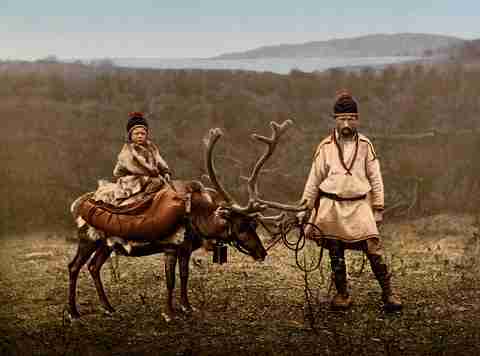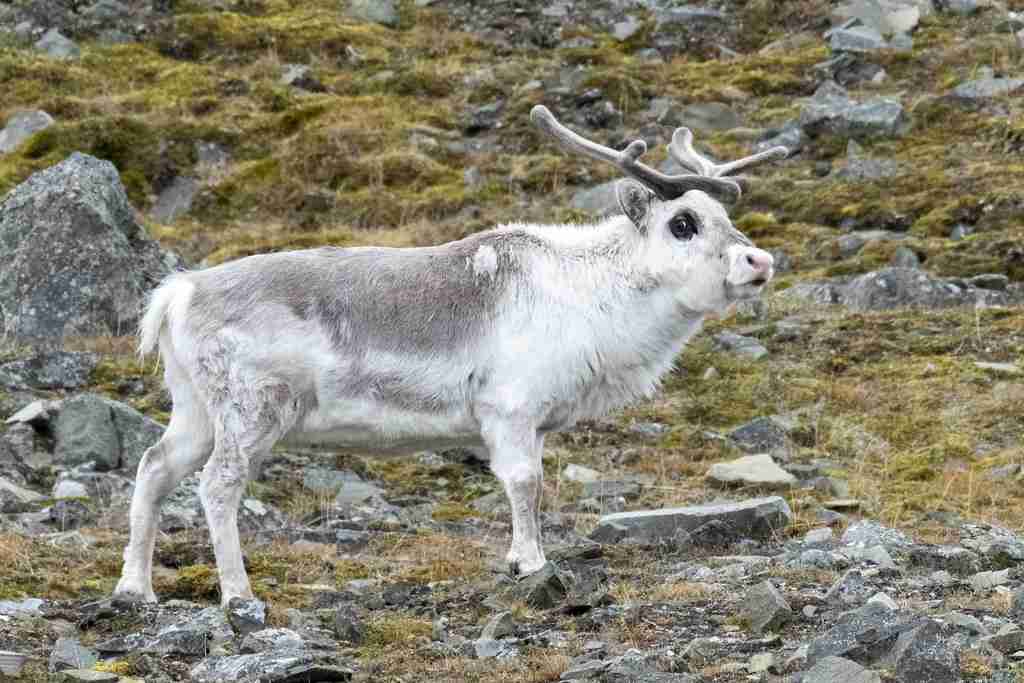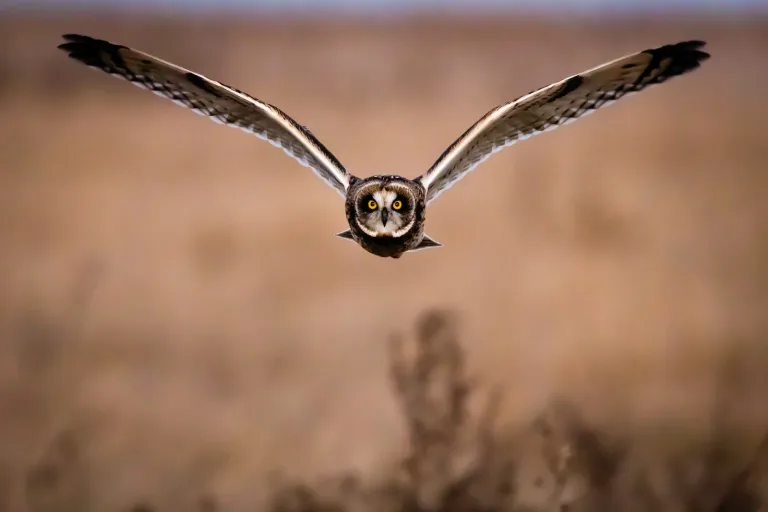23 Fun Facts About Reindeer | Arctic Wonders
1. Reindeer and caribou are the same species, Rangifer tarandus.
Reindeer, known as caribou in North America, are the same species, Rangifer tarandus. In Europe, they’re called reindeer, while in North America, wild ones are caribou and domesticated ones are reindeer.
They look similar, but caribou usually have bigger, more complex antlers. Don Moore from the Smithsonian says reindeer are mostly domesticated caribou.
2. Reindeer are covered in hair from nose to hooves.
Reindeer have a unique coat, covered in hair from their noses to their hooves. This hair helps them walk on ice and snow without slipping. Their noses are the only ones among deer to be fully hairy.
Their fur, with a woolly undercoat and hollow, air-filled outer hairs, keeps them warm, even at -50°C. The hair on their feet prevents snow from clogging their hooves.
3. In Finnish mythology, a god named Ukko rides a chariot pulled by a Reindeer.
In Finnish mythology, Ukko, the revered god of thunder, sky, and harvest, rides a chariot drawn by reindeer. His name, meaning ‘thunder’ and ‘old man,’ signifies respect and power.
Ukko, akin to the Estonian god Uku, plays a crucial role in Finnish folklore, symbolizing strength and the natural forces, with reindeer as his noble companions.
4. Reindeers have a specialized nose that warms cold air before it enters their lungs.

Reindeer possess a distinctive nose, are fully haired and rich in blood vessels, and are adept at warming cold air before it reaches their lungs.
Equally important, this nose excels in detecting food beneath the snow, sensing danger, and navigating, ensuring the brain remains warm and responsive in frigid conditions.
5. A male’s antlers can reach up to 50 inches.
Male reindeer can grow antlers as long as 51 inches, the largest relative to body size among deer, while females’ antlers can reach 20 inches.
These antlers, shed and regrown annually, are crucial in mating rituals and establishing herd dominance, highlighting their significance in reindeer social life.
6. Reindeer have been domesticated for centuries by humans.
Around 3 million domestic reindeer live in northern Europe, vital to traditional herders like the Sami for transportation, meat, milk, and hides. These reindeer are also used for pulling heavy loads.
Their milk is versatile: fresh in early lactation, turned into cheese mid-lactation, and later used for butter, showcasing the reindeer’s significant role in the livelihoods of northern communities.
7. Reindeer have different eye colors in winter and summer.
Reindeer eyes change color with the seasons, shifting from gold in summer to blue in winter. This unique adaptation, involving a layer behind the retina called Tapetum Lucidum, enhances their vision in varying light conditions.
In winter, the blue eyes help reindeer see better in low light, while the summer’s gold to green hues adapt to brighter environments, a remarkable feature studied by scientists.
8. Reindeer are herbivores, feeding on mosses, herbs, ferns, grasses, and shrubs.
Reindeer, as herbivores, feast on a variety of plants including mosses, herbs, ferns, grasses, and tree leaves, particularly willow and birch. In winter, they rely on lichen and fungi, skillfully using their hooves to scrape away snow.
These ruminants, capable of eating 9 to 18 pounds of vegetation daily, adapt their diet seasonally to thrive in their changing environments.
9. Reindeer hooves adapt to the seasons, hardening in winter for better traction.
Reindeer hooves are uniquely adapted for seasonal changes. In winter, their hooves harden and the edges sharpen, providing traction on ice and snow. During summer, these hooves become sponge-like and expand, perfect for softer ground.
Spending 40% of their lives in snowy conditions, these cloven hooves distribute weight effectively, aiding in navigation across various terrains and contributing to their survival in harsh climates.
10. Santa’s Reindeer was first mentioned in 1821 in a booklet.
The idea of Santa’s reindeer first appeared in 1821 in the children’s poem ‘Old Santeclaus with Much Delight,’ published in New York. This poem introduced a reindeer pulling Santa’s sleigh, a concept later expanded to eight reindeer in the famous ‘Twas the Night Before Christmas.’
The original poem was part of a booklet titled ‘The Children’s Friend,’ marking the beginning of this enduring Christmas tradition.
11. Reindeers can see ultraviolet light, which helps them in the Arctic environment.
Reindeer have a unique ability to see ultraviolet light, a trait not found in other mammals. This adaptation, revealed in a study published in the Journal of Experimental Biology, allows them to see wavelengths up to 320 nanometers, beyond human capability.
This helps them spot food and predators in the bright Arctic environment, where ultraviolet light is more prevalent.
12. Reindeers are good swimmers, with a thick coat that provides buoyancy.
Reindeer are skilled swimmers, often crossing vast distances in search of food. Their two-layered coat, with a hollow outer layer, provides buoyancy, helping them stay afloat instead of sinking in cold water.
With strong hooves and athletic bodies, they can swim at speeds of 4 to 6 miles per hour, gracefully moving through the water with their majestic antlers visible above the surface.
13. Reindeer antlers have been studied for medical applications.
Scientists are exploring the medical potential of reindeer antlers, particularly the velvet covering them. This velvet, rich in growth factors, could aid tissue regeneration and healing.
Used as a nutritional supplement, antler velvet from deer or elk shows anti-inflammatory properties and contains key components of cartilage. Its medicinal use, especially in Western countries, highlights its potential in health and healing applications.
14. Rudolph the Red-Nosed Reindeer began guiding Santa’s sleigh in 1939.
Rudolph the Red-Nosed Reindeer, created by Robert L. May in 1939, is known for his glowing red nose. Initially mocked, Rudolph becomes a hero, using his bright nose to guide Santa’s sleigh through tough weather on Christmas Eve.
His story, first appearing in a Montgomery Ward booklet, symbolizes individuality and the importance of embracing unique qualities.
15. Bloodsucking insects can plague reindeer in the summer.
During summer, reindeer in the Arctic face swarms of blood-sucking insects like mosquitoes and black flies, causing stress that affects their feeding and calving. These insects, seeking blood for nutrition, can be especially harmful to young calves.
To escape, reindeer often gather in herds, seeking refuge in snowy areas or sandy slopes. Adult reindeer can lose significant amounts of blood to these pests weekly.
16. Reindeer were among the last animals to be domesticated.

Reindeer, one of the last animals to be domesticated, were first tamed in eastern Russia between 3,000 and 1,000 years ago. Humans have interacted with reindeer since the Upper Paleolithic, about 45,000 years ago.
Today, about half of the world’s 5 million reindeer are domesticated, with around 2.5 million in nine countries and 100,000 people involved in their care.
17. Reindeers have a strong sense of smell to detect predators and find food.
Reindeer have a remarkable sense of smell, which is crucial for survival in their harsh environments. Their noses not only warm the air they breathe but also help them detect food hidden under snow, sometimes as deep as two feet, and sense predators from afar.
This keen sense of smell guides them in finding food like lichens and staying alert to dangers, even in challenging conditions.
18. Some reindeer have red noses due to dense blood vessels.
Some reindeer, similar to the fictional Rudolph, actually have red noses, a result of dense blood vessels packed within. This ingenious adaptation helps regulate their body temperature in extreme climates.
These vessels warm cold air before it’s inhaled and cool warm air as it’s exhaled, maintaining a constant brain temperature. This rich nasal microcirculation is key to their survival in harsh conditions.
19. Reindeers have large distinctive hooves with four ‘toes’ on each foot.
Reindeer are equipped with large, distinctive hooves, each featuring four toes that enhance their movement in the Arctic.
Two primary toes support most of their weight, while the other two expand on softer grounds like snow, functioning like snowshoes for stable and efficient travel.
20. The Svalbard reindeer suffer from insular dwarfism.

The Svalbard reindeer, numbering about 10,000, is the smallest subspecies of reindeer and a unique example of insular dwarfism. Females weigh around 53-70 kg, and males 65-90 kg, making them the only large herbivores in this High Arctic region.
This phenomenon, where animals shrink in size due to limited space, is evident in these reindeer living on the Svalbard archipelago in the Norwegian Arctic.
21. Reindeer have diverse predators, including Arctic foxes, brown bears, and wolves.
Reindeer face various predators like golden eagles, wolves, bears, Arctic foxes, and lynxes, depending on their habitat. Post-breeding season, many exhausted or injured males become more susceptible to these diverse threats.
While healthy adults in large herds are generally safe, the most vulnerable are the young calves, along with old, weak, or injured reindeer.
22. Reindeers are known to migrate long distances, up to 3,000 miles.
Reindeer migrate up to 3,000 miles yearly, traveling from the Arctic tundra to forests in vast herds, adapting seasonally for food and shelter across diverse landscapes.
Found in the Arctic and subarctic, they move in vast herds, sometimes numbering half a million, adapting their location seasonally for optimal living conditions.
23. Adult reindeer shed antlers in December, young males in spring, and females in summer.
Reindeer shed their antlers at different times: adult males in late fall, young males in spring, and females after calving in summer. This shedding occurs as the antler’s connection weakens due to hormonal changes.
Fallen antlers then serve as a valuable calcium and mineral source for rodents and other animals, showcasing nature’s efficient cycle of reuse and sustenance.
FAQs
Reindeer mainly eat mosses, herbs, ferns, grasses, and tree shoots, particularly willow and birch. In winter, they survive on lichen and fungi, digging through snow to find them.
Reindeer live in the Arctic tundra and nearby boreal forests of Greenland, Scandinavia, Russia, Alaska, and Canada, with some populations domesticated in Europe.
Santa’s sleigh is pulled by nine reindeer, known as Dasher, Dancer, Prancer, Vixen, Comet, Cupid, Donner, Blitzen, and the famous Rudolph, each with their unique role in guiding his Christmas Eve journey.
Reindeer shed their antlers at different times: adult males typically in late fall, young males in spring, and females after calving in summer, due to hormonal changes affecting the antlers’ connection to their heads.
Yes, both male and female reindeer grow antlers, a unique trait among deer species. Males can have antlers up to 51 inches long, while females can reach 20 inches.







